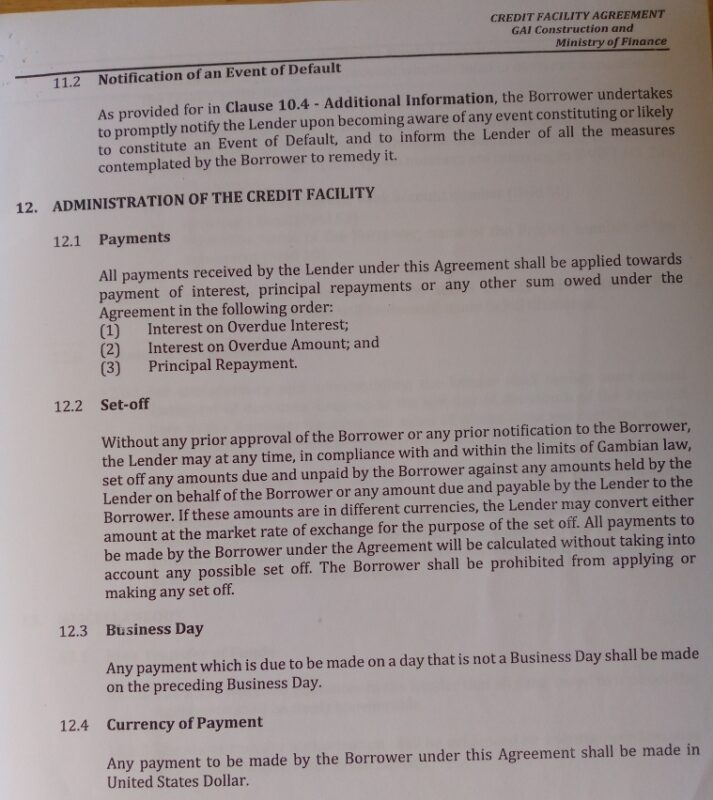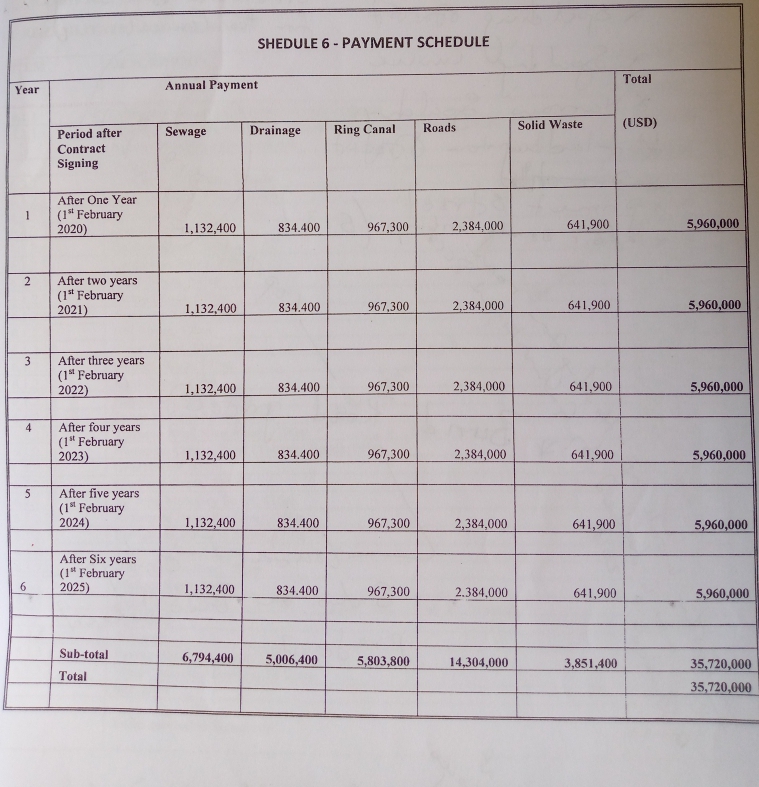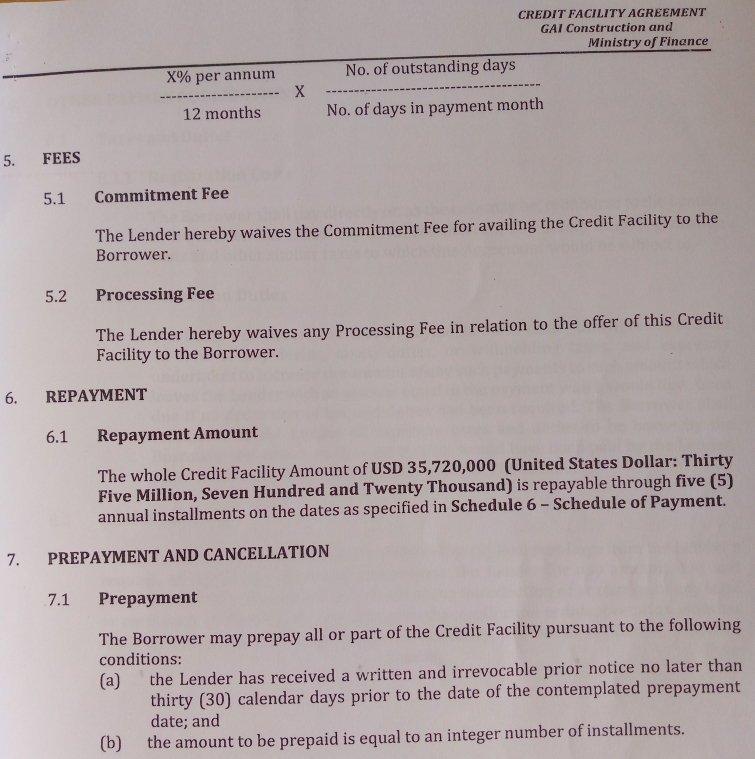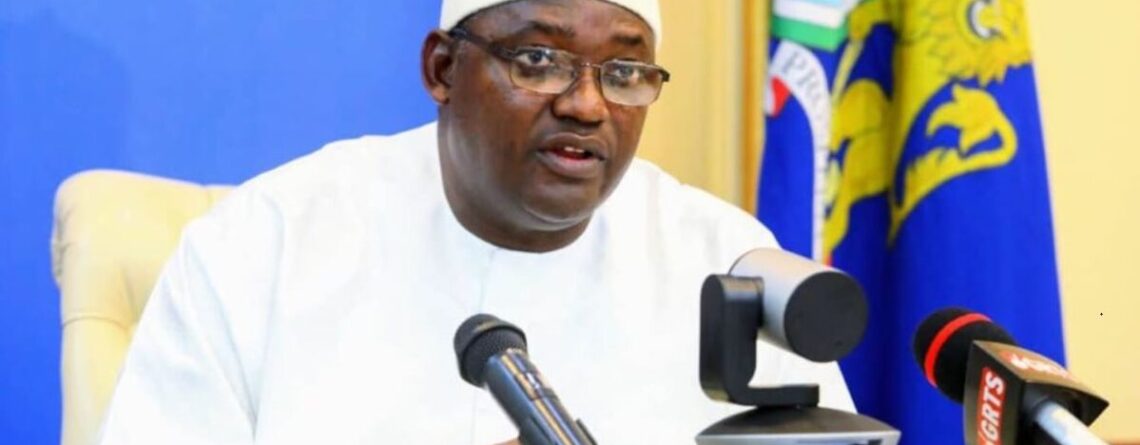Fact-Check: Was President Barrow’s Remarks About The Banjul Rehabilitation Project ‘Entirely’ Correct?
Claim 1: The contractor of the Banjul Rehabilitation Project requested to be paid in Dalasi
Source: President Adama Barrow
Verdict: The claim is false

One of the flagship infrastructure projects undertaken by the administration of President Adama Barrow is the US$36 million Banjul Rehabilitation Project. The single-sourced project was criticized for flouting basic procurement regulations.
Claim
In his recent interview on QTV’s State of Affairs programme, the Gambian leader claimed the contractor of the project, Haddim Gai, requested to be paid in dalasi while submitting his proposals to him at State House.
“When he came to my office, what he told me, it was too good to believe. “I will pre-finance and I will accept you to pay me in dalasi”,” said Barrow.

Fact-check
The Banjul Rehabilitation Project and the loan agreement between Haddim Gai and Gambia government was signed in May 2019.
This was after Gai’s initial meetings with President Barrow at the State House.
Clause 12.4 of the credit facility of the Banjul Project states: “Any payment which is due to be made by the Borrower (Government) under this agreement shall be made in United States Dollar.”
It was much later after the contract was signed— on the advice of the International Monetary Fund (page 59)— that an addendum was done in October, 2019, to fix this issue. The finance minister Mambureh Njie confirmed this.
“Initially, it was in dollar terms. We knew after that that it was going to add up to their (sic) debt. Then through the negotiation, we made into dalasi denominated,” said Njie in February, 2020.
In the same interview, the President told the reporter that the Gambia’s partners were initially against the Banjul Project.
“Today, now our partners are working with us on the Banjul Project. First time they said no but later they accepted,” said the President.
However, the President fell short of explaining what the partners were against. Both IMF and the World Bank’s advices were on three major things: the initial dollar denominated nature of the project, the 6-year payment plan and the waiver of procurement regulations by the Executive to sole-source such a large contract to Gai Construction.
The advice from the World Bank would in fact lead to steps by authorities to amend the Gambia Public Procurement Authority Act, a process currently stuck at the parliament. In their Systematic Country Diagnostic report released in May, 2020, the World Bank states on page 42:
“The authorities have committed to a number of measures to avoid such episodes (sole-sourcing large projects like Banjul Project) from reoccurring: (i) tightening the legal framework for public procurement, which currently makes it legal for the executive to overrule standard procurement requirements; (ii) strengthening the capacity of The Gambia Public Procurement Authority (GPPA); and (iii) improving the project selection process by empowering the recently created Gambia Strategic Review Board (GSRB) and providing it with proper project selection criteria.”

The World Bank added:
“… In May 2019, the government signed a U.S. dollar–denominated local credit facility for the Banjul Rehabilitation Project worth US$36 million (2 percent of GDP). The dollar-denominated nature of the facility was nullified and an addendum to the contract was signed in October 2019 to stipulate that government obligations would be settled in dalasi in full through the annual budgets, in step with the phased implementation of the project.”
In their April, 2020, staff monitoring programme report, IMF noted the following on page 59:
“The implementation of the SMP (Staff Monitoring Programme) encountered several challenges. In our efforts to improve the sanitation and traffic congestion in Banjul, we signed a dollar-denominated financing arrangement for the Banjul Rehabilitation Project (BRP). Also, given the emergency character of the work that needed to be initiated ahead of the rainy season, the procurement of the project did not follow the standard process. Subsequently, upon consultation with the IMF staff, we recognized that this arrangement, if implemented, would have been inconsistent with the zero ceiling on new non-concessional external debt contracted and that the single-sourcing of the contract put in question the governance aspects of the project and potentially compromised its value for money. To redress these problems, the financing arrangement was revisited to eliminate debt creation, with payments to be made in dalasi in step with project implementation.”

Conclusion
The Gai Construction was to be paid in dollars, according to the initial agreement government had with the company. It was the insistence of the World Bank and IMF that changed that.
Verdict: The claim is false
Claim 2: The contractor requested to be paid in 10 years
Source: President Adama Barrow
Verdict: The claim is false

According to the President in the same interview, Haddim told him he would do the contract in 5 years and be paid in 10 years.
“I do it in 5 years and you pay me in 10 years,” he quoted Haddim to have said.
It should be clear that President Barrow’s meeting with Haddim was when the contract was being proposed. The project document would be signed later in May 2019 and amended in October the same year.
The initial contract agreed to by the Gambia government with the contractor was a 5-year payment plan. Not 10 years.
Clause 6.1 of the credit facility that would later be amended stated that the loan is to be paid through a five-year installment plan.
There was an anomaly in the contract though. Schedule 6 contradicted Clause 6.1, stating that the payment will be over a period of six years starting February 2020 to 1st February 2025.
This payment plan will also be spread to 10 years on the advice of the IMF and the World Bank.
Verdict: The claim is false
Researched by Mustapha K Darboe
Note: We have reached out to State House media team for a comment on our findings but we have not received any response as at the time of this publication. We will update the story as soon as we have a response.

